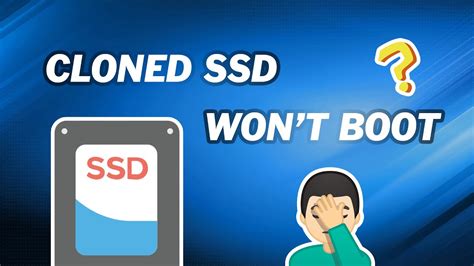hp 800g2 ssd clone not booting Removed my auxiliary drive before cloning, removed my c: drive after clone completion and then booted with just the SSD installed. It now gives me a windows error code saying that my pc needs to.
Pieteikta, bet nereģistrēta saimnieciskā darbība. Persona iznomā īpašumu juridiskai personai bez saimnieciskās darbības reģistrācijas, bet ir PVN reģistrēta persona, tātad rēķinā ir izrādīts PVN 21%. Juridiskai personai, apmaksājot rēķinu, jāietur iedzīvotāju ienākuma nodoklis (IIN).
0 · cloned ssd won't load
1 · cloned ssd won't boot hp
The term “end stage” has been used to describe hypertrophic cardiomyopathy (HCM) with left ventricular systolic dysfunction (LVSD), defined as occurring when left ventricular ejection fraction is <50%. The prognosis of HCM-LVSD has reportedly been poor, but because of its relative rarity, the natural history remains .

Jun 16, 2024 Removed my auxiliary drive before cloning, removed my c: drive after clone completion and then booted with just the SSD installed. It now gives me a windows error code . I used Acronis to clone my current SSD to the Crucial SSD using an external USB hookup, but the computer will not boot from the cloned Crucial drive when I install it internally. I re-formatted F drive and re-cloned it three times, but my computer will not boot from it.
If your cloned drive is a GPT disk, make sure the UEFI boot mode is enabled, and if it is an MBR disk, then set it to Legacy boot mode. If your computer does not support UEFI boot mode, you need to do a GPT to MBR conversion before you can boot from the cloned drive. I have spent weeks trying to get the computer to clone and boot, but I always run into some version of a “no bootable device found” error when booting to the newly-cloned 1 TB SSD. The “old” SSD boots just fine, so it doesn’t seem to be a problem with the OS installation. Removed my auxiliary drive before cloning, removed my c: drive after clone completion and then booted with just the SSD installed. It now gives me a windows error code saying that my pc needs to. Right-click on every partition on SSD and choose "Delete volume" (or whatever that is called in Finnish). Redo cloning. Do not assign any additional space to recovery partition.
It's a clone from a failing HDD to a SSD. It was cloned sector by sector. Everything is on the new SSD except this issue booting into Windows. It looks like the configuration system.
cloned ssd won't load
> Restarted the computer, "boot device not found, please install an operating system on your harddrive". Within BIOS SETUP, is the SSD listed as a bootable device? At "power-on" time, can you tell the BIOS to select a "one-time" boot from the SSD? The problem is I can’t get the G2 to boot from the USB. This is what i have ran into: When i enter the boot menu I have 4 options: Fast Boot, CD_ROM, USB Storage, Network PXE boot. If I try USB Storage it says I don’t have an OS. I have created several Boot drives with different utilities all to no avail. Jun 22, 2024. Cloned SSD will not boot computer. Although a NVMe SSD is much faster than a SATA SSD, you only see the difference on the benchmark test. On old computers you can't boot directly to the PCIe card with the NVMe SSD as there is no option on BIOS to do so. The EFI partition must be on a SATA drive and then transfer the boot sequence . Solution. USAFRet. Nov 19, 2020. If you're going to redo the clone instead of the above commandline procedure: In Macrium, you can clone from multiple drives at once. From the 2TB, drag that.
I used Acronis to clone my current SSD to the Crucial SSD using an external USB hookup, but the computer will not boot from the cloned Crucial drive when I install it internally. I re-formatted F drive and re-cloned it three times, but my computer will not boot from it.
cloned ssd won't boot hp
If your cloned drive is a GPT disk, make sure the UEFI boot mode is enabled, and if it is an MBR disk, then set it to Legacy boot mode. If your computer does not support UEFI boot mode, you need to do a GPT to MBR conversion before you can boot from the cloned drive. I have spent weeks trying to get the computer to clone and boot, but I always run into some version of a “no bootable device found” error when booting to the newly-cloned 1 TB SSD. The “old” SSD boots just fine, so it doesn’t seem to be a problem with the OS installation.
Removed my auxiliary drive before cloning, removed my c: drive after clone completion and then booted with just the SSD installed. It now gives me a windows error code saying that my pc needs to.
Right-click on every partition on SSD and choose "Delete volume" (or whatever that is called in Finnish). Redo cloning. Do not assign any additional space to recovery partition. It's a clone from a failing HDD to a SSD. It was cloned sector by sector. Everything is on the new SSD except this issue booting into Windows. It looks like the configuration system.
> Restarted the computer, "boot device not found, please install an operating system on your harddrive". Within BIOS SETUP, is the SSD listed as a bootable device? At "power-on" time, can you tell the BIOS to select a "one-time" boot from the SSD? The problem is I can’t get the G2 to boot from the USB. This is what i have ran into: When i enter the boot menu I have 4 options: Fast Boot, CD_ROM, USB Storage, Network PXE boot. If I try USB Storage it says I don’t have an OS. I have created several Boot drives with different utilities all to no avail. Jun 22, 2024. Cloned SSD will not boot computer. Although a NVMe SSD is much faster than a SATA SSD, you only see the difference on the benchmark test. On old computers you can't boot directly to the PCIe card with the NVMe SSD as there is no option on BIOS to do so. The EFI partition must be on a SATA drive and then transfer the boot sequence .
celine pico belt bag discontinued
adidas born original for him

2 Answers. Sorted by: 0. Your upper output does not agree with the output of lsblk, so one of them must be wrong about the current situation. Not sure what generated the upper output, but seeing it even has a typo: maybe rather believe lsblk output.tricular [LV] size and ejection fraction [EF], left atrial [LA] volume), outcomes data are lacking for many other parameters. Unfortunately, this approach also has limitations. The first obstacle is how to best define risk. The cutoffs suggested for the same param-eter vary broadly for different risks in different patient populations
hp 800g2 ssd clone not booting|cloned ssd won't load



























